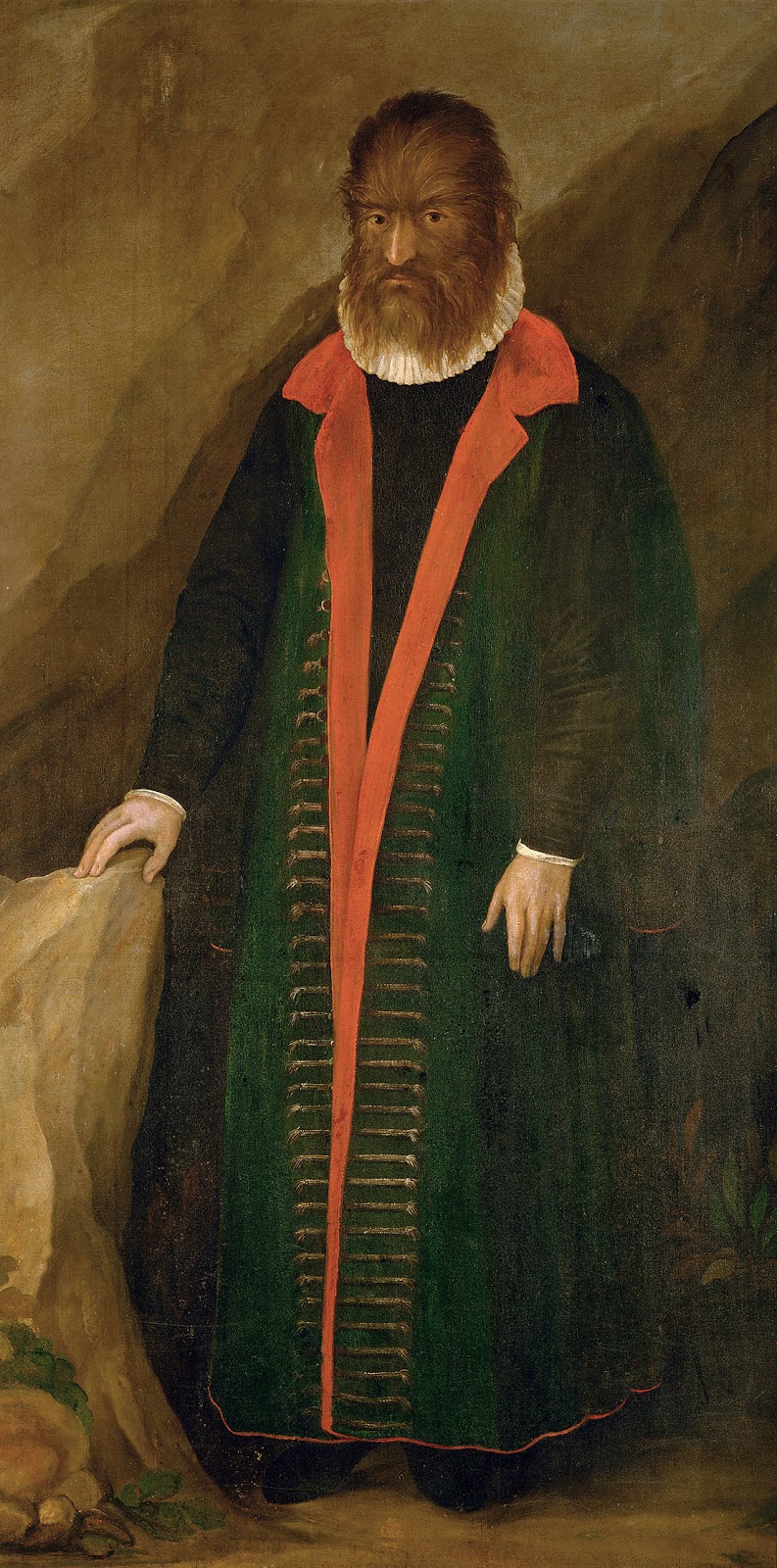Anonymous: Portrait of Petrus Gonsalvus (1580)
(Ambras Castle, Innsbruck, Austria)
A painting by an unknown 16th century German artist. The man on this painting is Petrus Gonsalvus (1537 – 1618), a citizen of Tenerife on the Canary Islands who had the condition hypertrichosis, also called Ambras syndrome. Petrus Gonsalvus became very famous during his lifetime on account of his condition and he first came to the court of Henry II, King of France, were he presented as a 'wildman' at the coronation as a gift and received education. when Henry II died in 1559, his widow, Catherine de Medici became regent and decided that Petrus should marry, Catherine de Medici chose as his wife another woman called Catherine, whose last name is unknown. Catherine supposedly did not see her groom and wasn’t aware who her future husband would be until the actual wedding ceremony. The couple had seven children of whom 4 also had hypertrichosis, the other three didn’t inherit their father’s condition (the children with hypertrichosis were later given away as 'presents' to other nobles) . Gonsalvus was later given as a gift to court of Margaret of Parma, regent of the Netherlands, and later to Alexander Farnese, duke of Parma and and Governor of the Spanish Netherlands, who send him to Parma were he served Alexander's son Ranuccio I Farnese. Catherine and Petrus toured Europe with their offspring, and were a source of extreme fascination for nobles. Paintings of the Gonsalvus family—in formal wear designed to contrast their ‘wild’ appearance—were often given as gifts in high society. This painting was made in Munich and most likely the artist never saw Petrus Gonsalvus and used a drawing of the face of Petrus - this explains why the hand of Petrus are depicted as hairless while in reality they were hairy. The painting was probably a gift of local dukes of Munich to Archduke Ferdinand II of Further Austria who transferred the painting to Ambras Castle to the 'Chamber of Art and Curiosities' were it still can be seen. Petrus Gonsalvus himself died in 1618 but was refused burial in sacred ground because of his appearance. Catherine is said to have died in 1623. Painting from 1580.
